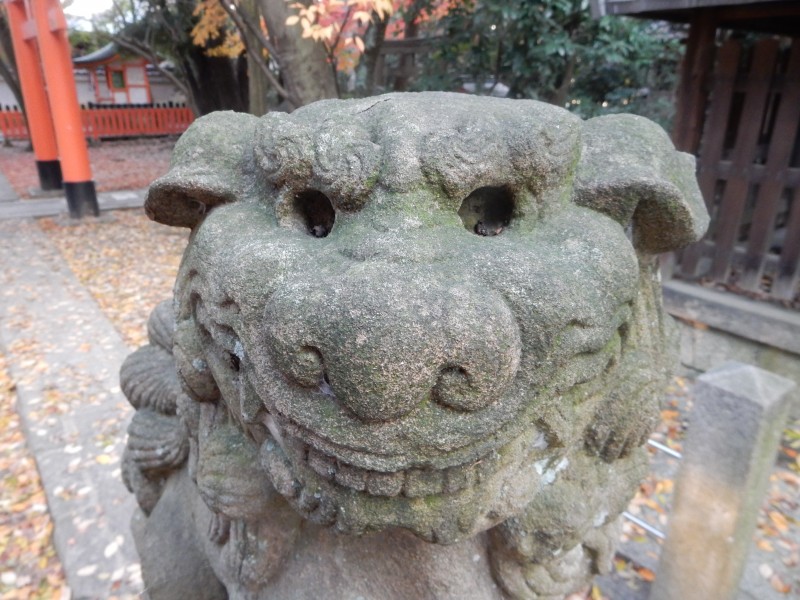
Some komainu are fierce and some are cute
Anyone who visits a shrine in Japan will have noticed the curious creatures that stand as guardians, welcoming visitors but keeping out evil spirits. Those who visit a lot of shrines will notice considerable differences in the statues. Some are cute, some are fierce, some are worn away and some in remarkable poses. Invariably though, one will have its mouth open and the other closed. This is the ‘a-un’ combination signifying the first and last letters of the Sanskrit alphabet. Together they combine to make the sacred sound of Aum, universal resonance as recognised in ancient India.
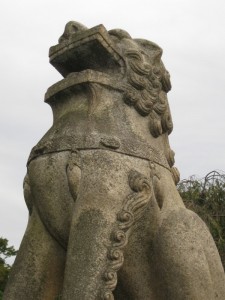
Mouth defiantly open in the ‘A’ posture
Komainu (often called lion-dogs or Korean dogs in English) originated with the Chinese guardian lions of Tang China. These in turn may have been based on Indian lions, with a lion statue raised by King Ashoka on a column in the third century. Wooden statues of lion pairs were used in palaces in the Nara and Heian periods in Japan, and it was only with the 14th century that they came to be used outdoors in stone.
Because the average lifespan is roughly 100 years, the very oldest komainu that remain date back to the Edo Period. They are mainly at Shinto shrines but are also found at Buddhist temples. There were strong regional variations in the past, but since the end of the Meiji Period the Ministry of Education fostered distribution of a standard type. Japan’s age of diversity was replaced by the kind of uniformity that has plagued its forests where sugi cedar trees predominate to the misery of many allergy sufferers.
There are two basic types of komainu. One is jinnai komainu, mostly made of wood or metal and found in the inner sanctuary (Honden). The other is sando komainu, normally made of stone and found on the approaches to shrines. There are also regional variations. The Izumo type for instance is found along the Japan Sea, whereas the Naniwa type predominates in the Kansai area.
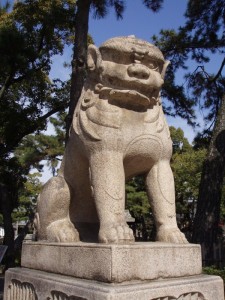
No evil spirits get past this fellow
There are many people who take a special interest in the shrine guardians, and there is even an organisation called ‘Society of the Connoiseurs of Komainu Tail Tufts’. Many shrines received their komainu as donations, either from shrine members or prominent local figures. Pride may have had a lot to do with this, with village prestige at stake. Since the inscriptions provide the donor’s name, they act as a kind of publicity message for the individual or company which provides it.
Following the Russo-Japanese War (1904-5) inscriptions celebrating victory in war became more common. With the enthronement of the Taisho emperor in 1912, there were inscriptions commemorating the Imperial Accession. Then in 1940, with the hegemony of State Shinto, came felicitations on the supposed 2600th anniversary of imperial rule. In modern times it is common to see inscriptions wishing for the safety of shrine parishioners or commemorating a company’s foundation anniversary.
Early komainu tended to be ferocious, though they subsequently became cuter. Particularly striking are the handstand type, which welcome visitors with a party trick. It serves to put a smile on their face and holds out the promise of good things to come. All in all, komainu are a reassuring and benevolent guardian figure who assures the visitor that they are entering a different realm, one that is free of the pollution and malicious spirits that inhabit the everyday world.
******************
Information for the above is taken from an article by my former colleague, Yoshiaki Kotera, whose article on ‘Komainu: The Birth and Habitat Distribution of Shrine Guardian Lions’ appeared in Japanese Religions (Vol 34, No. 1, Jan 2009)
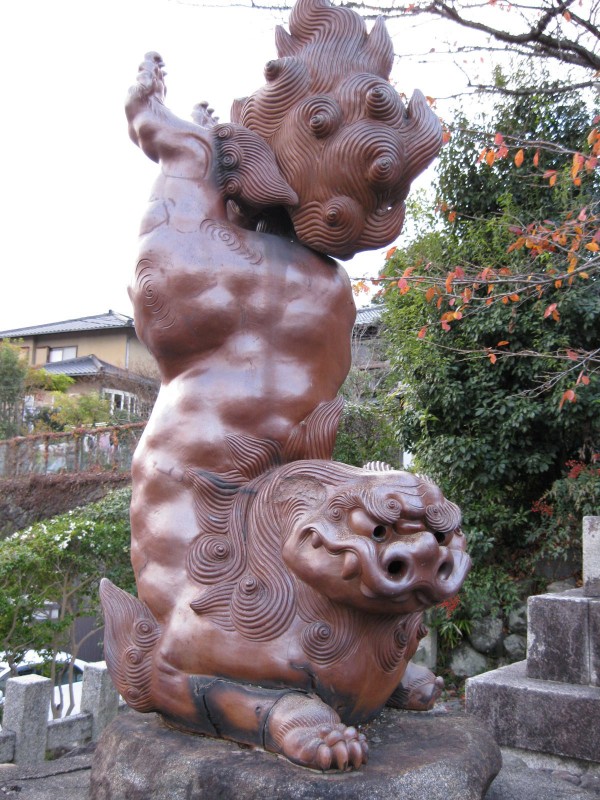
Handstand komainu in distinctive form
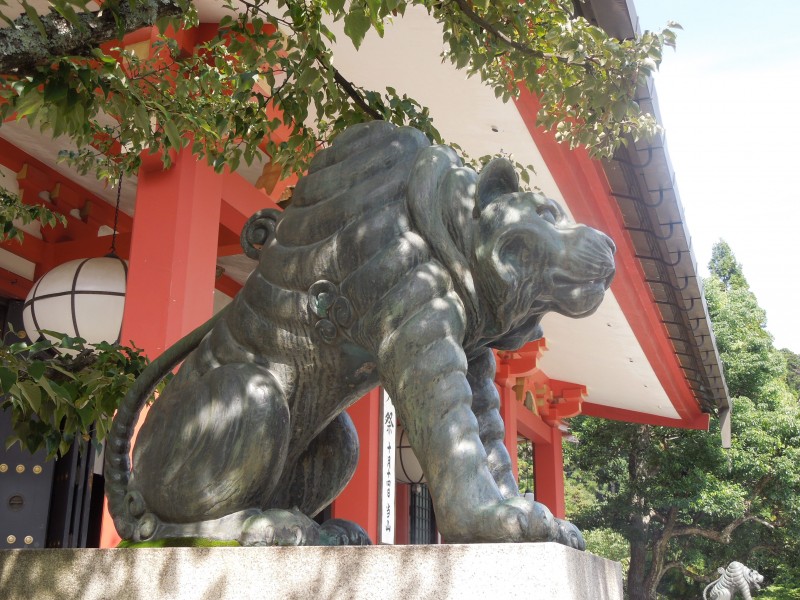
Some komainu are more lion than others
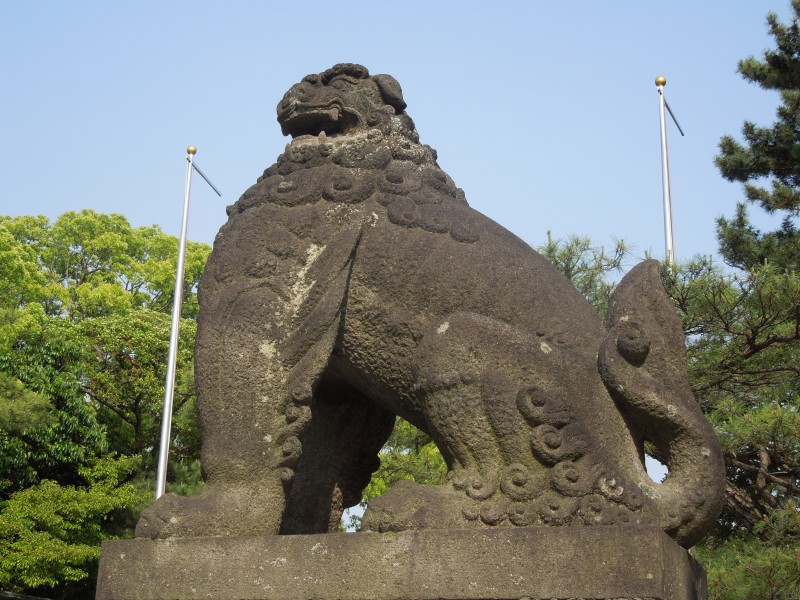
Others are distinctive in their body shape…
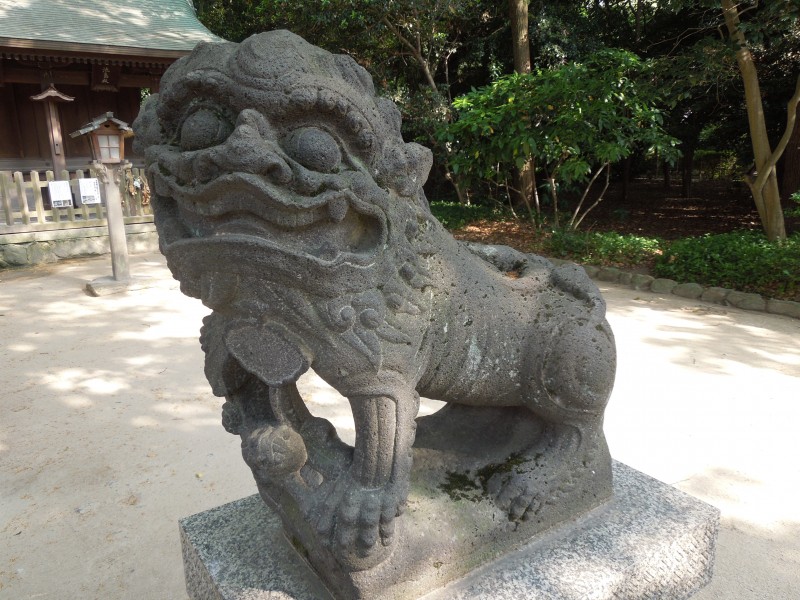
…. or facial expression
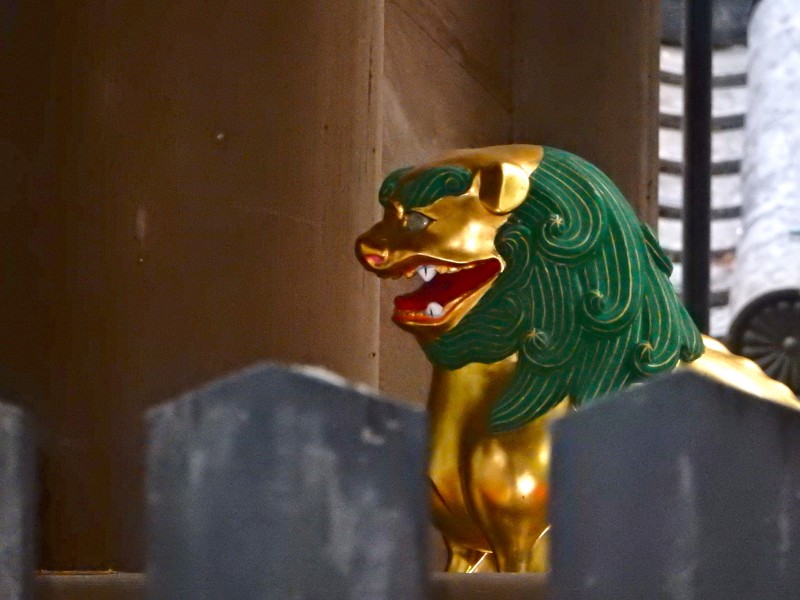
Jinnai komainu (Sanctuary guardians) on the other hand can be magnificent
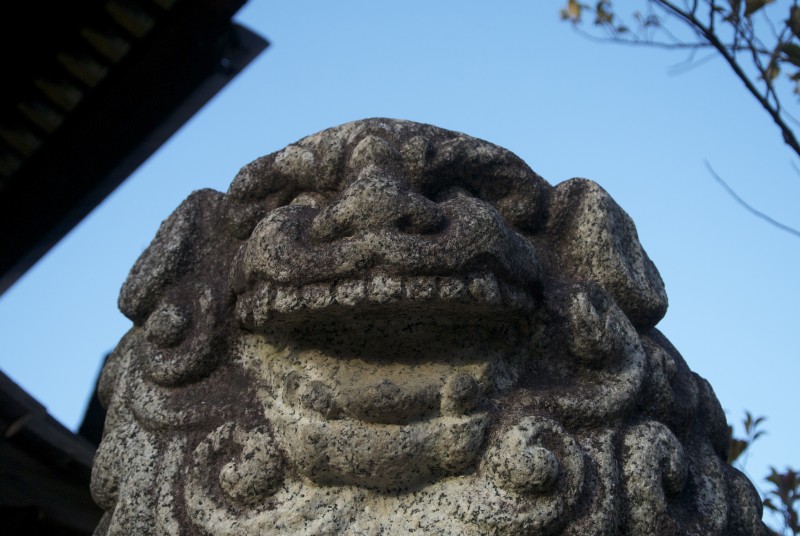
And some komainu are just plain endearing (all photos by John Dougill)

I particularly like the komainu that have the litle cub playing around their foot (or being restrained by said foot).
Yes, I agree. One of the best komainu I’ve seen was at a shrine near Mt Fuji with little cubs running all over it… And many thanks for pointing out the faulty link, which I’ve now rectified.